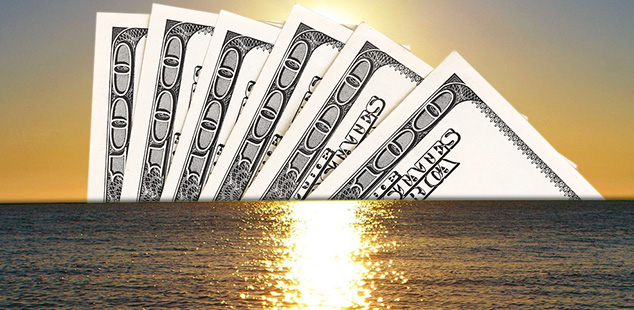
Since the economic meltdown that began in 2007, the term Quantitative Easing has entered the vocabulary of economists, analysts and traders. This monetary tool of central banks is a fancy way of saying, “turn the currency presses up to full speed.” What QE stands for is increasing the paper money supply in the economy, with the intention of creating more borrowing and spending. However, it is an unstable economic solution.
The Opiate of Finance
Certain opiate-based pain medicines are great at relieving severe pain for short-term needs. However, they also carry a great risk of addiction. This is a classic case of the cure being worse than the problem it is prescribed to resolve.
Many economists now worry that the world’s central banks are hooked on this financial painkiller, creating severe consequences in the future. Officials in the United States are now talking about QE4, the fourth round of monetary easing. Likewise, European bankers are now discussing another round of QE in their countries, citing a “subdued” rate of inflation.
Market observers have differing views on the impact and dangers of QE, but all agree with the fact that its being discussed points to a global weakness in the financial markets. Should more such stimulus activity be implemented, it will, for the short term, be expected to boost the value of the dollar against the euro.
It is the mid to longer-term consequences of such actions that create the greatest concern. Like the opiate, most central banks have used up the tools in their bag, and it takes more printing and debt to have any positive impact. Many see that QE has simply allowed countries to continue to incur debt without cutting spending.
QE and Gold Prices
The immediate impact of QE is to increase the price of assets and commodities. The short-term effect also generally caused interests rates to increase, putting downward pressure on gold prices. However, it is important to understand these dynamics from both a short and long-term perspective.
Traders understand this short-term downward pressure, and all the markets observed the impact in pushing gold prices down when QE was in full swing through its earlier incarnations. Since banks no longer have the option to lower interest rates below their rock-bottom levels (other than the experiments with negative interest rates), QE is seen as the only real tool currently available to monetarists and central banks.
However, those who invest in gold for longer-term positions also understand the ultimate consequences of keeping the printing presses running 24/7. This is especially so when the paper they produce is used to prop up failing economies and to support increased deficit spending and debt.
In this light, any short-term downward pressures create buying opportunities for the time these addictions bring about the financial results that become increasingly inevitable. Those results include inflation, severe economic downturns, and increases in the price of precious metals and gold.
As one bearish observer, Albert Edwards of Societe Generale, claims, “Central banks in the Western world have set the scene for an ‘even bigger version’ of the 2007-2008 global financial crisis.” 1 If this scene is set, the fulfillment, or even partial movement towards, such negative developments will likely see many more investors again running to the shelter of gold and precious metals.
Additional Sources:
1 – http://finance.yahoo.com/news/ready-relive-2008-crisis-albert-135017190.html

